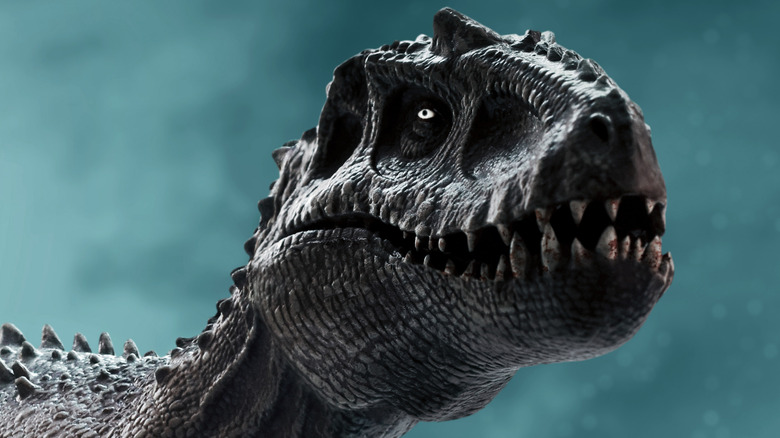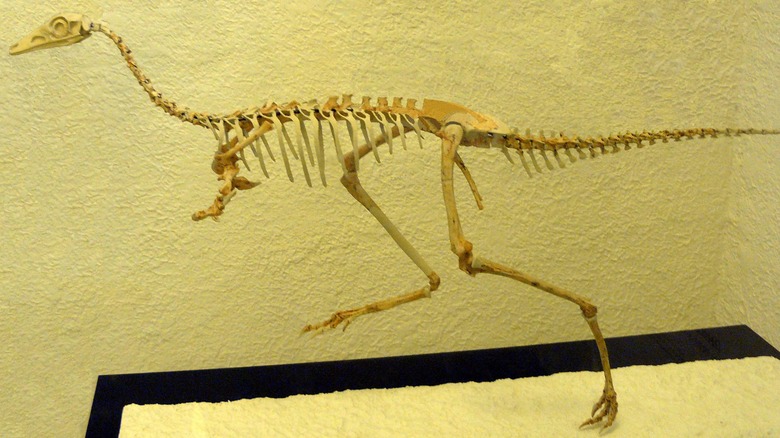Why Some Dinosaurs Shrank In Size Before Extinction
One of the few things we know for sure about dinosaurs is the fact that a lot of them were huge. Thanks to the numerous dinosaur skeletons that are now on display at museums around the world, we can see how much bigger they were compared to the whales and elephants of today. But when they first emerged during the Triassic Period, the largest dinosaurs were "only" comparable in size to the largest modern-day mammals, per The Guardian. It was during the Jurassic Period when the truly gigantic dinosaur species first appeared, and they only got bigger in the millions of years thereafter. However, not all dinosaurs followed this trend in the lead-up to their extinction 65 million years ago.
As revealed in a recent study from the University of Bristol (via Science Daily), the alvarezsaurs were an unusual group of dinosaurs because of how they became smaller as they evolved instead of growing larger as most others did. These creatures were already much smaller than the average dinosaur, to begin with, and for the most part, they lived on a diet of lizards, baby dinosaurs, and early mammals. According to the study, they originally weighed around 65 to 90 pounds. But about 95 million years ago — some 70 million years after they first appeared — some alvarezsaurs only weighed about 10 pounds, making them similar in weight to your average house cat (via Daily Paws). So what made them shrink so dramatically?
The alvarezsaurs became smaller after they switched to an insect diet
According to University of Bristol School of Earth Science professor Michael Benton, the alvarezsaurs' drastic decrease in size might have been caused in part by "competition" with other dinosaurs for food during the Cretaceous Period, which saw the emergence of flowering plants across Earth's ecosystems. "Flowering plants changed the nature of the landscape completely, and yet dinosaurs mostly did not feed on these new plants," he clarified, via Science Daily. "But they led to an explosion of new types of insects, including ants and termites."
Alvarezsaurs were among the dinosaurs that started feeding on termites and other insects, and that apparently led to them evolving in such a way that they became smaller, with specialized anatomical features that allowed them to catch their prey more efficiently. One such example was Mononykus (skeleton pictured above), a smaller alvarezsaur that was approximately 3 feet long and weighed in at around 9 to 11 pounds. "Its arm was short and stout and it had lost all but one of its fingers which was modified as a short spike," explained study co-author James Clark. "It looked like a punchy little arm, no good for grabbing things, but ideal for punching a hole in the side of a termite mound."
As further noted by the researchers, it's long been established that some carnivorous dinosaurs became smaller over time and ultimately evolved into modern-day birds. But as evidenced by these incredible shrinking alvarezsaurs, there was another major miniaturization event during the age of the dinosaurs, one that was necessary for facilitating certain species' dietary switches.

